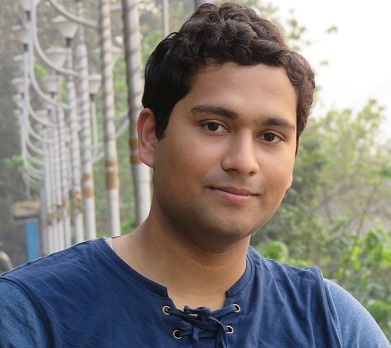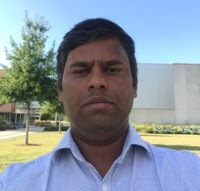SoftCity: Softwarized and Adaptive Network Slicing for Intelligent Smart City Communication
Written by Deborsi Basu, Raja Datta, and Uttam Ghosh
The advancements in Software-Defined Networking (SDN) and Network Function Virtualization (NFV) trigger the development of dynamic Network Slicing (NS) approach for optimized resource utilization. The concept of NS has been derived from network virtualization and softwarization techniques to support future technological growth. Next-generation communication networks are going to encounter a massive data explosion due to a rapid increase in service demands. From 5G to 6G network, Industry 5.0, Massive IoT as well as Healthcare-4.0 are also expanding their service boundary within a resource-restricted environment. Poor and unplanned ways of resource expansion can result in huge cost overhead, traffic overhead, and wastage of energy. So, the augmentation of heterogeneous network architectures becomes extremely necessary to handle these critical situations. NS is the most advanced and smart technology that can bridge multiple services through a common and shared resource channel. This sharable platform becomes more vulnerable to security threats as most of the network data will be accessed by multiple TNOs (Telecom Network Operators) to deploy and release their respective network services. The major security issue will arise to authenticate the dynamically produced network slice. In this work, we are going to propose a dynamic slice selection algorithm (DSSA) that can allow or restrict the NFCs (Network Function Chains) to get associated with only the authentic slice using an encrypted hash functioning technique. The results are expected to come high accuracy rate in selecting the most trustable slice for installed network services.
Introduction
The revolution of smart cities is happening through the latest technological innovations [1, 2]. The main aim of such dynamic transformation is to improve the quality of life of the people who are using the services. Nations are trying to build smart cities leveraging the digitization of interconnected smart devices. IoT devices and connected sensor networks are working as the backbone for smart cities. Monitoring, metering, actuating, and orchestrating functions of networking elements are done via next-generation communication networks. The concept of all-connected-network is used to give a normal city a smarter look. The efficient and effective connectivity of widely separated, distributed, and interconnected devices has become the basis of a smart city [1].
A smart city consists with multiple and distinct cluster of small- or large-scale networks, such as e-healthcare network, Industrial-IoT network, vehicular network, UAV network, smart agricultural network, Mobile network, etc [3]. All these networks possess different characteristics including unique privacy and security protocols. Individual network operators control the operations of these networks over a shared network infrastructure. Meeting the excessive demands of smart city applications requires customized communication networks. Technologies such as Software-Defined Networking (SDN) and Network Function Virtualization (NFV) comprehensively powering the efficiency of multi-tenant networking environment supporting the co-existence of heterogeneous domains simultaneously [4-5]. Network softwarization and virtualization collaboratively work together to enable the Network Slicing feature inside all types of networking conditions. In this article, a customizable NS framework is proposed supporting the demands of smart city related applications.
Network Slicing for Smart City Communication
5G, or beyond 5G, networks are the most desirable next-generation communication network in the market now. Unlike the previous traditional networks, 5G offers huge additional advantages and broaden the scope of service from people to things. 5G architects are targeting to build a global communication model that fulfills distinct service requirements utilizing common network framework. As discussed in the above section, the concept of network slicing is introduced, which can logically separate and create independent networks (network slice instance or NSi). The aggregation of data flow of similar data traffic is done on same slice to reduce the complexity of resource-scheduling. The beauty of NS is its isolation feature between adjacent slices. A new dimension is added to the IoT devices those do not impose isolation on their own. 5G and B5G (beyond 5G network) are aiming to provide eMBB (Enhanced Mobile Broad Band), URLLC (Ultra Reliable Low Latency Communication), and mMTC (Massive Machine Type Communication) services. NS plays a crucial role in providing sufficient isolation and resource allocation in resource-restricted environment. Two major challenges in this process are (a) AI-enabled Slice management and orchestration (MANO) and generation of robust slices according to various service requirement. MANO is the fundamental building block for NFV based networks. The robust automation of NSs assures stable and better quality of services following end users’ requirements [6].
Augmented AI for Adaptive NS for Smart City Communications
The realization of NSI is done for both static and dynamic conditions. In static condition, fixed network resources are allocated to the services and that remains constant over the entire slice life cycle. The amount of allocated resources neither increases nor decreases throughout the task completion. On the other hand, dynamic resource allocation makes the system more flexible and customizable. In dynamic NSI a fixed quantity of resources is initially allocated but the release of resource entities is done on-demand. The dynamic behavior improves the overall networking performance. A holistic AI-driven dynamic NS framework is illustrated in the below section for smart city communication [7].
Figure 1: ANS for smart city communication
A System Model Framework for Smart City
The high-level AI-driven automatic NS framework takes a deep reinforcement learning (DRL) into consideration as shown in Figure 1, where the functionalities of E2E (end to end) NSs is covered by the slice traffic analyzer. The AI techniques are applied on the multi-dimensional traffic data as per the historical statistics. The input of ANS (Automatic Network Slicing) agent is the predicted and characterized traffic. The static data of the traffic is taken for feature engineering process to form a low-dimensional but effective set of features. The online analysis of the incoming traffic is done to confirm whether any new slice is required or not to satisfy the service demand. The slice broker implements the slice generation process on-demand and the slice scaling coordinator coordinate resources to the NSi. Finally, the last module generates a suitable reward to a function to the slice performance indicators. The module is termed as the reward module [8].
Operating Principle Using NS and Future 5G
The NS works on a shared network infrastructure to use services in heterogeneous networking conditions. Even though ANS envisioned the advanced objectives of next-generation communication networks. There are still existing challenges on which significant contributions are required. The scopes of applications for NS in the context of next-generation smart city network is shown in Figure 2.
Figure 2: Network slicing applications for smart city environment
- Existing challenges: (a) Security and Privacy, (b) Data Integrity, (c) Energy efficiency, (d) Network complexity, (e) Service outage, (f) Cost of implementation, (g) Hardware availability, (h) User friendly platform, etc. are among such critical issues where significant contributions are still required as far as the development of smart city network is considered [9].
- Scope for improvements: Scientists are working to remove existing hindrances using advanced technological modules, such as AR/VR (Augmented and Virtual Reality) Platforms, Federated Learning (FL), Quantum communication for on-demand services, UAV networks, Mobility aware computing, etc. Many astonishing technologies are yet to hit the market which will trigger the global smart city revolution [10].
Conclusion
This article illustrates the importance of automation in the context of next-generation network slicing for smart city communication. Service improvement is possible using ANS and a supporting framework is proposed accordingly. The framework is designed to deliver unsupervised learning-based anomaly detection, deep reinforcement learning based slicing prediction, and automation of the entire process. The framework has been designed specifically to produce differentiated traffic analysis and characterization of traffic and generation of slices accordingly. The model can be further extended over distributed systems. To comply with large-scale smart city network, ANS agent can be built in such a way that each of the managed domain must be kept within a reasonable scale. Methods like federated learning (FL), tiered learning (TL) along with 5G and B5G or 6G technologies will play a pivotal role in those scenarios. Challenges like robust auto-slicing leveraging the human reputation and emotion is kept as one of the future works of this study.
References
- Fanqin Zhou, Peng Yu, Lei Feng, Xuesong Qiu, Zhili Wang, Luoming Meng, Michel Kadoch, Liang Gong, and Xianjiong Yao. "Automatic network slicing for IoT in smart city." IEEE Wireless Communications 27, no. 6 (2020): 108-115.
- Bogdan Rusti, Horia Stefanescu, Marius Iordache, Jean Ghenta, Catalin Brezeanu, and Cristian Patachia. "Deploying Smart City components for 5G network slicing." In 2019 European Conference on Networks and Communications (EuCNC), pp. 149-154. IEEE, 2019.
- Xuemin Shen, Jie Gao, Wen Wu, Kangjia Lyu, Mushu Li, Weihua Zhuang, Xu Li, and Jaya Rao. "AI-assisted network-slicing based next-generation wireless networks." IEEE Open Journal of Vehicular Technology 1 (2020): 45-66.
- Deborsi Basu, Abhishek Jain, Uttam Ghosh, and Raja Datta. "A reverse path-flow mechanism for latency aware controller placement in vsdn enabled 5g network." IEEE Transactions on Industrial Informatics 17, no. 10 (2020): 6885-6893.
- Deborsi Basu, Raja Datta, and Uttam Ghosh. "Softwarized network function virtualization for 5g: Challenges and opportunities." Internet of Things and Secure Smart Environments (2020): 147-192.
- Bogdan Rusti, Horia Stefanescu, Marius Iordache, Jean Ghenta, Cristian Patachia, Panagiotis Gouvas, Anastasios Zafeiropoulos, Eleni Fotopoulou, Qi Wang, and Jose Alcaraz Calero. "5G smart city vertical slice." In 2019 IFIP/IEEE Symposium on Integrated Network and Service Management (IM), pp. 13-19. IEEE, 2019.
- Wu, Wen, Conghao Zhou, Mushu Li, Huaqing Wu, Haibo Zhou, Ning Zhang, Xuemin Sherman Shen, and Weihua Zhuang. "AI-native network slicing for 6G networks." IEEE Wireless Communications 29, no. 1 (2022): 96-103.
- Chafika Benzaid, Tarik Taleb, and JaeSeung Song. "AI-based Autonomic & Scalable Security Management Architecture for Secure Network Slicing in B5G." IEEE Network (2022).
- Kashif Ahmad, Majdi Maabreh, Mohamed Ghaly, Khalil Khan, Junaid Qadir, and Ala Al-Fuqaha. "Developing future human-centered smart cities: Critical analysis of smart city security, Data management, and Ethical challenges." Computer Science Review 43 (2022): 100452.
- Tarana Singh, Arun Solanki, Sanjay Kumar Sharma, Anand Nayyar, and Anand Paul. "A Decade Review on Smart Cities: Paradigms, Challenges and Opportunities." IEEE Access (2022).
To view all articles in this issue, please go to October 2022 eNewsletter. For a downloadable copy, please visit the IEEE Smart Cities Resource Center.



To have the eNewsletter delivered monthly to your inbox, join the IEEE Smart Cities Community.
Past Issues
To view archived articles, and issues, which deliver rich insight into the forces shaping the future of the smart cities. Older eNewsletter can be found here. To download full issues, visit the publications section of the IEEE Smart Cities Resource Center.





